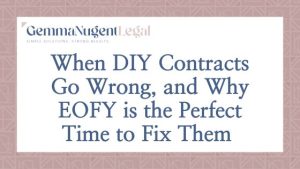What suppliers need to know
In Western Australia, Part 1F of the Civil Liability Act 2002 (WA) sets out how legal responsibility is shared when more than one party is at fault for a loss. It can apply to claims for economic loss and property damage. In many contracts, the client will want to contract out of proportionate liability legislation.
What is proportionate liability?
If a contract issue or dispute leads to legal proceedings and more than one party has contributed to the loss, the legislation means that the court is required to divide the responsibility between each of them. The different contributors are known as “concurrent wrongdoers”, and the idea is that each party is only liable for their share of the loss. This is called “proportionate liability”.
Each state and territory in Australia has similar legislation, which is often called “proportionate liability legislation”. In WA (and most other states), the law allows contracting parties to “contract out” of these rules. That means the contract can say that one party (usually the service provider or supplier) will be responsible for the full amount of the loss, even if others were also at fault.
In WA, the clause will say something like this (from this WA Government standard contract):
The Customer and the Contractor agree that Part 1F of the Civil Liability Act (WA) 2002 does not apply to the Customer Contract.
Why clients include these clauses
Clients like to exclude proportionate liability because it simplifies recovery. If something goes wrong, they can pursue a single party (usually the party they have the contract with) without having to identify or prove fault against multiple contributors. That single party can then seek a contribution from others, if it chooses to.
It’s easy to see the commercial appeal: it’s quicker, cheaper, and more straightforward for the client.
What’s the risk for service providers and suppliers?
The risk is that the supplier or service provider ends up on the hook for 100% of the damages, even if another party caused most of the problem. If you’re the supplier, you can still try to recover a contribution from that other party, but this brings additional time, legal costs, and uncertainty.
There’s also a potential issue with insurance. Many public liability and some professional indemnity policies are written on the assumption that liability will be shared between all responsible parties. If you’ve agreed to take on more than your share of the risk, your insurer might treat that as “assumed liability” and not cover it. “Assumed liability” means “extra” liability that you’ve taken on (i.e., “assumed”) under the contract, that would not ordinarily be allocated to you in the normal rules of a contract or court proceeding.
This is one of the main reasons brokers often recommend removing these clauses from contracts. You should always check with your broker that the policy will still respond if the client won’t agree to delete the clause.
When is the risk low?
For many consulting and service businesses, the practical risk of excluding proportionate liability legislation is relatively low, particularly where:
- There are no subcontractors or subconsultants
- The services don’t involve physical site work or complex interfaces
- The exposure to third-party loss or damage is minimal
In those cases, I’d usually recommend letting this clause go and keeping your powder dry for more significant risks.
What can you do to protect yourself?
If you do rely on others to help deliver your scope (e.g., subconsultants, subcontractors or suppliers) consider the following steps:
- Review your insurance to check whether assumed liability is covered or if an exclusion of proportionate liability legislation prejudices your cover
- Include robust indemnity and liability provisions in your downstream contracts
- Make sure those downstream contracts also exclude proportionate liability, so you’re in a better position to recover a contribution if needed.
Excluding proportionate liability legislation has become standard practice in many sectors (including, frustratingly, government contracts). That doesn’t mean it’s always appropriate, but it does mean it’s something you need to assess and manage on a case-by-case basis.






